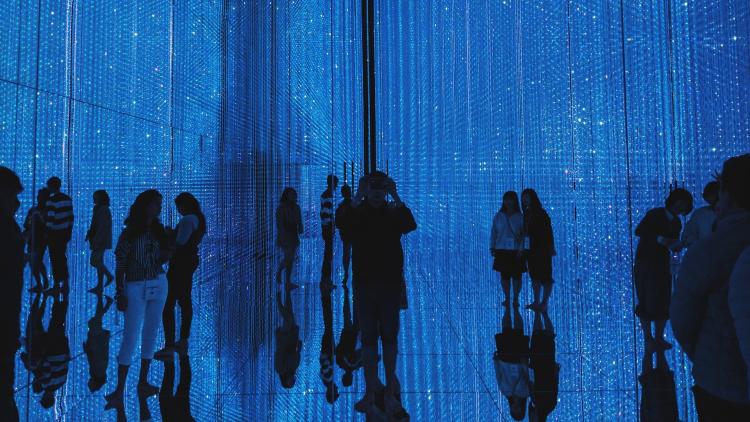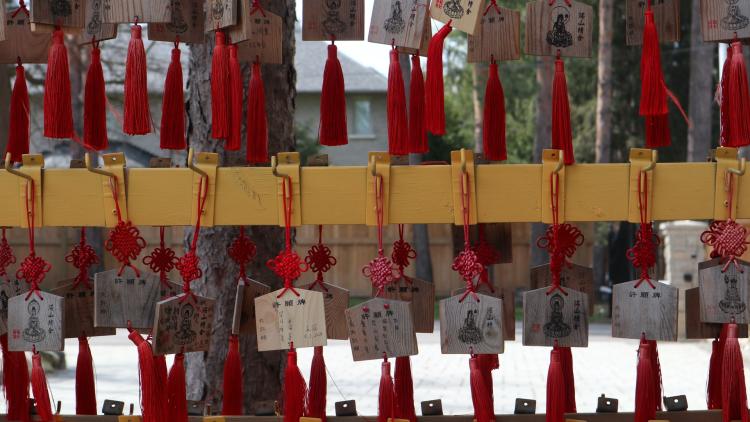Arts of Premodern East Asia

Key information
- Start date
- End date
- Year of study
- Year 2, Year 3 of 3 or Year 4
- Duration
- Term 2
- Module code
- 158100017
- FHEQ Level
- 6
- Credits
- 15
- Department
- Department of History of Art and Archaeology & School of Arts
Module overview
This module examines the art and culture of premodern East Asia through a range of thematic lectures, that may adopt a pan-East Asian approach or may hone in on a specific region (China, Korea or Japan).
Drawing on visual material, including (but not limited to) paintings, ceramics, tomb furnishings and textiles, the module seeks to present an overview of key developments in East Asian art from early times to the 1800s. The topics considered include artists, artworks, producers, consumers, materials and design approaches. The collections in the British Museum galleries will be the focus and students will have the opportunity to study the objects in depth, developing both connoisseurship and critical knowledge in the process. Classroom discussion will be complemented by study-visits to museum collections in London.
In 2022/23, the focus will be on Korea.
Objectives and learning outcomes of the module
On successful completion of this module a student will be able to:
- Demonstrate knowledge of the distinctive material forms and contexts of art, as well as the social roles of its makers and audiences, during the period studied
- Have an understanding of the relationship of the visual arts to wider social and cultural developments during the periods covered in the module
- Critically discuss key historiographical issues relevant to the material
- Evaluate varied approaches and key issues in the study of the arts of East Asia
Workload
- Lectures: 2 hours per week
Scope and syllabus
Depending on staff availability, the module may primarily address a single region (China, Korea or Japan) and/or period or may cover a specific theme linked to the module LOs.
Potential topics include:
- Art and religious cultures
- State patronage and the imagery of state power
- Lives and social roles of artists
- Audiences and patrons for art
Method of assessment
- 1,500-1,700-word essay second year and 1,700-2,000-word essay for final year (worth 30%)
- Presentation (worth 20%)
- Exam: 2 hours (worth 50%)
Suggested reading
- Lee, Soyoung, JaHyun Kim Haboush, Sunpyo Hong, and Chin-Sung Chang. Art of the Korean Renaissance, 1400-1600. New York : New Haven: Metropolitan Museum of Art ; Yale University Press, 2009.
- Martin Powers and Katherine Tsiang eds., A Companion to Chinese Art (John Wiley & Sons: 2016)
- Lillehoj, Elizabeth. Art and Palace Politics in Early Modern Japan, 1580s-1680s. Leiden ; Boston: Brill, 2011.
- McCausland, Shane. The Mongol Century: Visual Cultures of Yuan China, 1271-1368. London: Reaktion Books, 2015.
- Park, J. P., Burglind Jungmann, and Juhyung Rhi. A Companion to Korean Art. Hoboken, NJ: John Wiley & Sons, Inc., 2020.
- Pierson, Stacey. Chinese Ceramics. London: V&A, 2009.
- Screech, Timon. Obtaining Images: Art, Production and Display in Edo Japan. Honolulu: University of Hawaiʻi Press, 2012.
- Mason, Penelope E., and Donald Dinwiddie. History of Japanese Art. 2nd ed. Upper Saddle River, NJ: Prentice Hall, 2005.
- Clunas, Craig. Art in China (Oxford)
Disclaimer
Important notice regarding changes to programmes and modules



